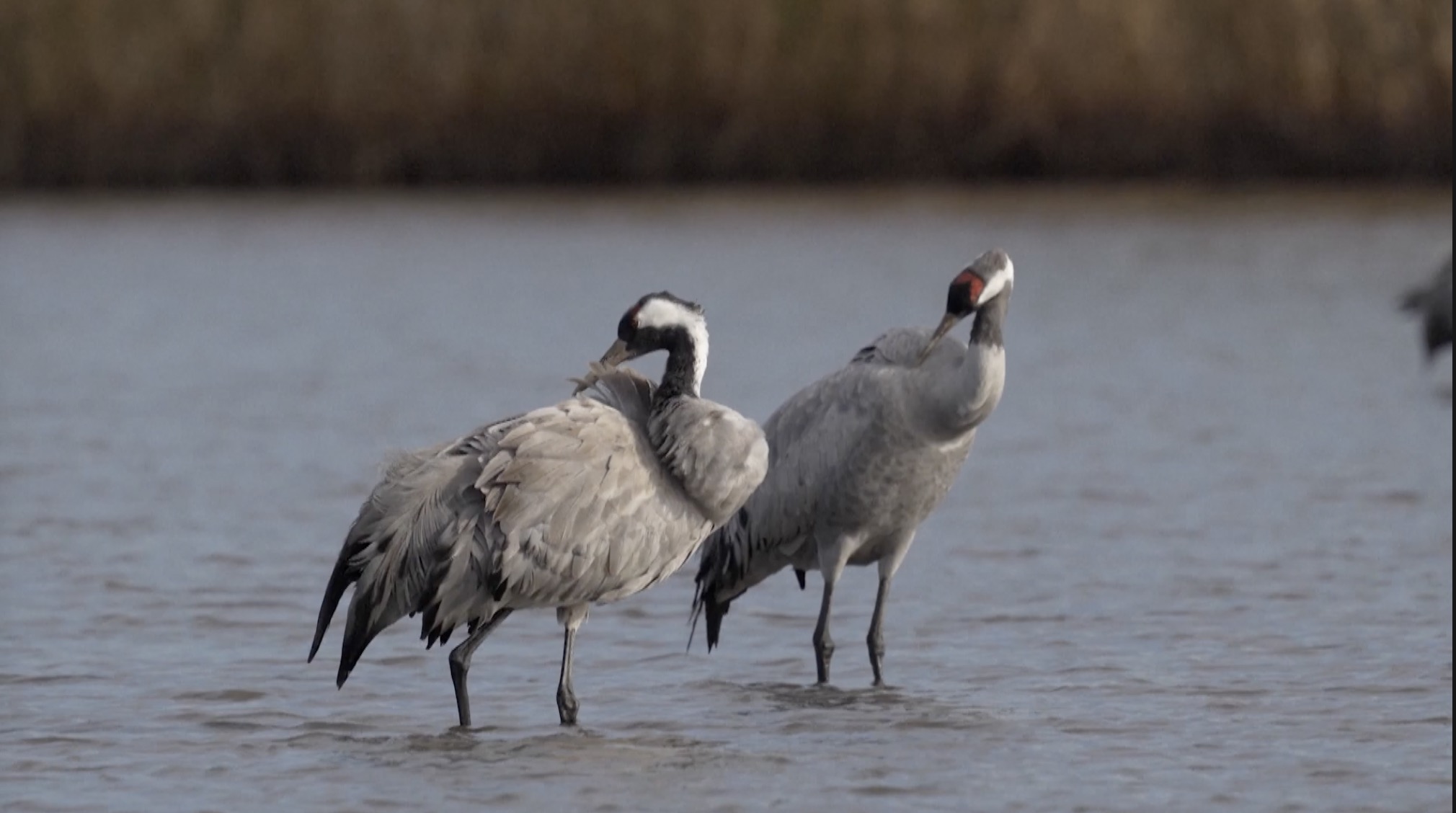Hungary is witnessing an extraordinary phenomenon as a record number of common cranes have opted to prolong their stopover in the Central European country.
Known for their seasonal migration from northern Europe to Africa, these cranes typically start flying south around mid-September and finish up by late October.
Attila Szilagy, a ranger tasked with tracking the crane population in Hortobagy National Park in eastern Hungary, said that in his 30 years working at the national park, this season stands out as a unique one due to the record influx of cranes.
"We tallied an unprecedented 194,000 birds, surpassing the previous record of 160,000 cranes," Szilagy said.
The national park serves as a vital staging area for common cranes, and this year's uncharacteristically warm fall, with temperatures exceeding 20 degrees Celsius, coupled with an ample food supply from nearby cornfields, has created conditions that have enticed many cranes to delay their migration south.
Climate change is said to be playing a role in altering the migration patterns of these birds.
"Fewer birds are migrating to Africa due to climate change. Central and southern Europe now provide a favorable climate for cranes," Szilagy said.
Global warming has not only led to a shift in their choice of wintering sites, but has diverted them from their traditional breeding grounds in northern Europe and instead opted to breed in Hungary. This shift contributes to the overall overpopulation of cranes in continental Europe.
Since the 1980s, there has been a substantial increase in the number of cranes roosting in the area. In the past, park rangers would count a maximum of 10,000 birds each season, but the current number has multiplied by 20 and continues to grow annually.
"Hortobagy has become a safe haven for cranes, providing abundant food and water. The learned behavior has been passed down through successive generations of birds, who now embrace this secure environment," Szilagy said.
"Some cranes now spend the entire year here. And later, when they reach sexual maturity, new breeding pairs are formed, marking a unique phenomenon," said Szilagy.


